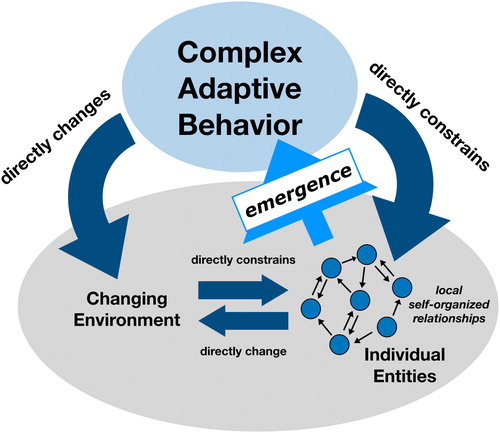Figures & data
Figure 1. A visual guide of complex adaptive behavior as the result of individual self-organized relationships, interactions with a shared environment, and mutual constraints. Reprinted with permission under a CC 3.0 BY-SA license (Megan Chiovaro and Alexandra Paxton, https://osf.io/zqrf2/).

Figure 2. A graphical depiction of the honey bee waggle dance. From a top-down view, the difference in angle between the location of the food source and the azimuth of the sun relative to the location of the hive is denoted alpha [a]. This information is used by forager bees, determining the angle of their waggle dances in the hive relative to the direction of gravity. Reprinted with permission under a CC 3.0 BY-SA license (Megan Chiovaro and Alexandra Paxton, https://osf.io/s7zau/).
![Figure 2. A graphical depiction of the honey bee waggle dance. From a top-down view, the difference in angle between the location of the food source and the azimuth of the sun relative to the location of the hive is denoted alpha [a]. This information is used by forager bees, determining the angle of their waggle dances in the hive relative to the direction of gravity. Reprinted with permission under a CC 3.0 BY-SA license (Megan Chiovaro and Alexandra Paxton, https://osf.io/s7zau/).](/cms/asset/243dff8b-2f15-47b7-90f1-db838656341a/heco_a_1836966_f0002_c.jpg)
